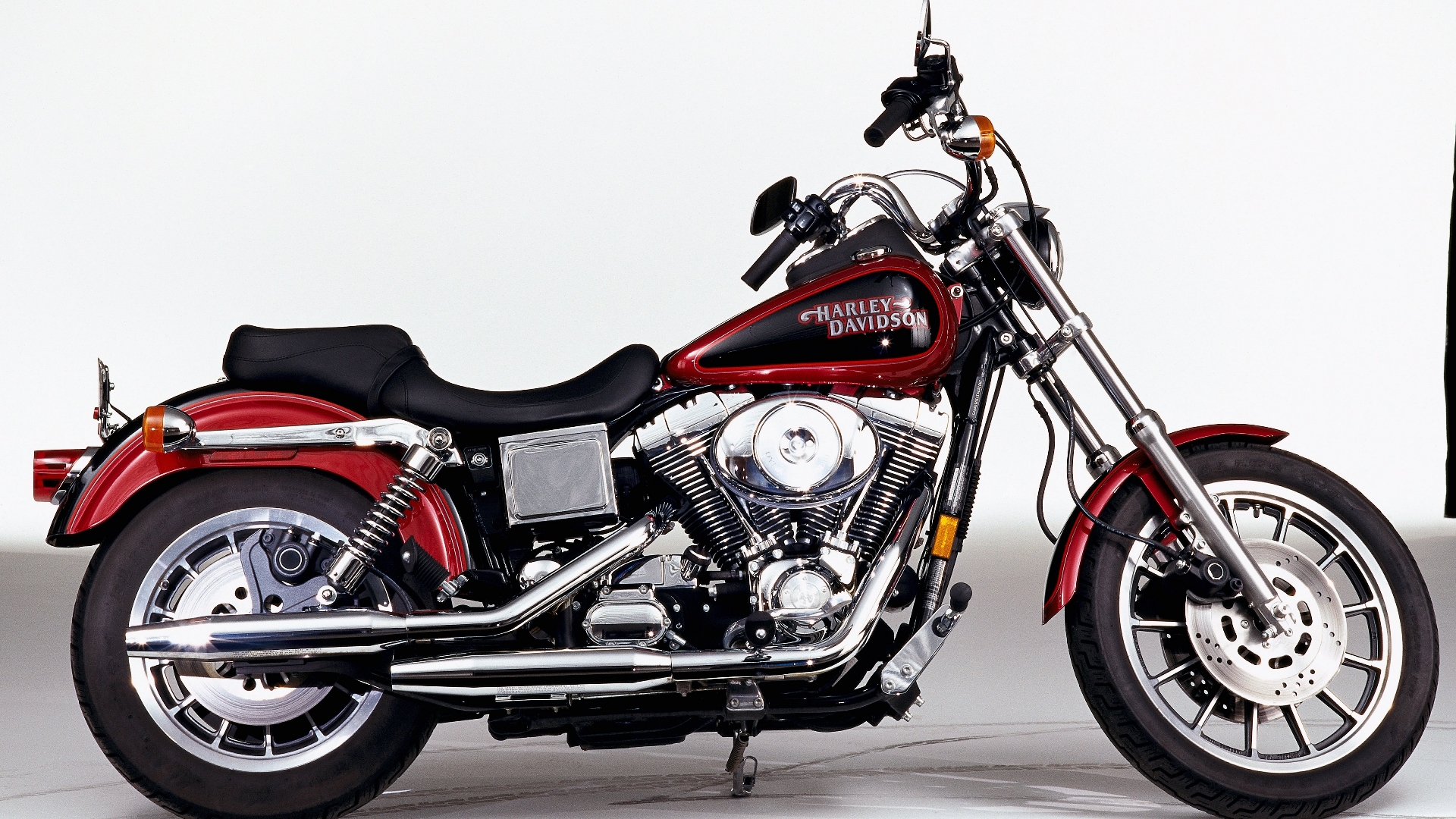

We may earn revenue from the products available on this page and participate in affiliate programs. Learn more ›
Harley-Davidson unveiled its 2018 motorcycle lineup on Tuesday night, surprising the world by not just revamping the Softail line, but also discontinuing the Dyna bikes. A couple of Dynas have been reborn as Softails—but they’re still distinctly different bikes than the 2017 models.
A quick scroll through some tweets and comment sections on Harley-Davidson’s social media posts since the reveal show outraged purists who are shocked by the decision to merge the two Big Twin lineups together.
So, what’s the difference between a Dyna and a Softail?
The Dyna was a raw, sporty, Harley-Davidson experience that served as an upgrade from the smaller Sportster. In many ways, the Dyna was a Sportster, but bigger. When you see a high-performance build of a big Harley, it’s usually based on the Dyna. The Softail, however, is meant more for long-distance comfort; it has the aesthetic of an old hard tail cruiser, but packs a cleverly-hidden rear monotube suspension. The key differences are solid engine mounts on the Softail (which produce less vibration) versus rubbery elastomer mounts on the Dyna (which provide more “character”), and said monotube rear suspension on the Softail versus twin rear shocks on the Dyna.
To the untrained eye, it might be tough for someone who isn’t into Harley to differentiate a Softail from a Dyna. It’s kind of like the difference between a Jeep TJ and JK. To most people, they’re both just Wranglers, but passionate enthusiasts see them as completely different vehicles. For that reason, discontinuing the Dyna line is downright insulting to a lot of Harley purists.
If the two are so similar, why are people so mad that the Dyna was discontinued? It’s because the Dyna lineup embodied the “heritage” and “character” that the Harley-Davidson brand is both praised and panned for continuing into the present day. Dynas were new bikes that looked and felt an awful lot like the Super Glides of the 1970s and 1980s (which were considered retro even back then)—and that was exactly how a lot of people liked their Harleys. Those people like the vibration at stop lights, the more confident handling in the dual-shock rear suspension. Now the Dyna fans need to either downgrade to a Sportster, settle for a Softail, or spend more money on a bigger, less-sporty touring bike. While they all might look similar, none of these bikes capture the same magic as the Dyna.
One way or another, the mourning over the Dyna will likely be temporary. Harley-David will either revive the Dyna lineup to appease the purists, or it’ll leave the name in the grave—and 20 years from now, people will wonder why people made such a big deal out of a “rubber soul” and dual-shock suspension. The people who do get it? They’ll collect old Dynas the way Jeep nuts collect CJs.